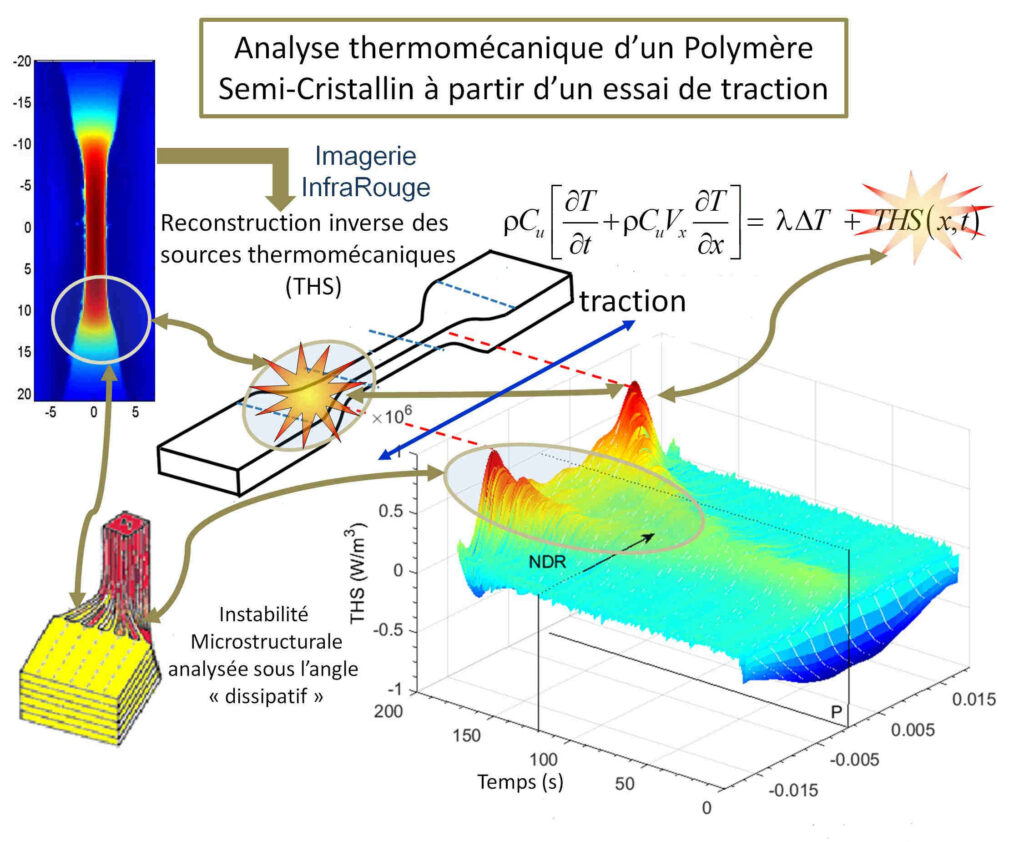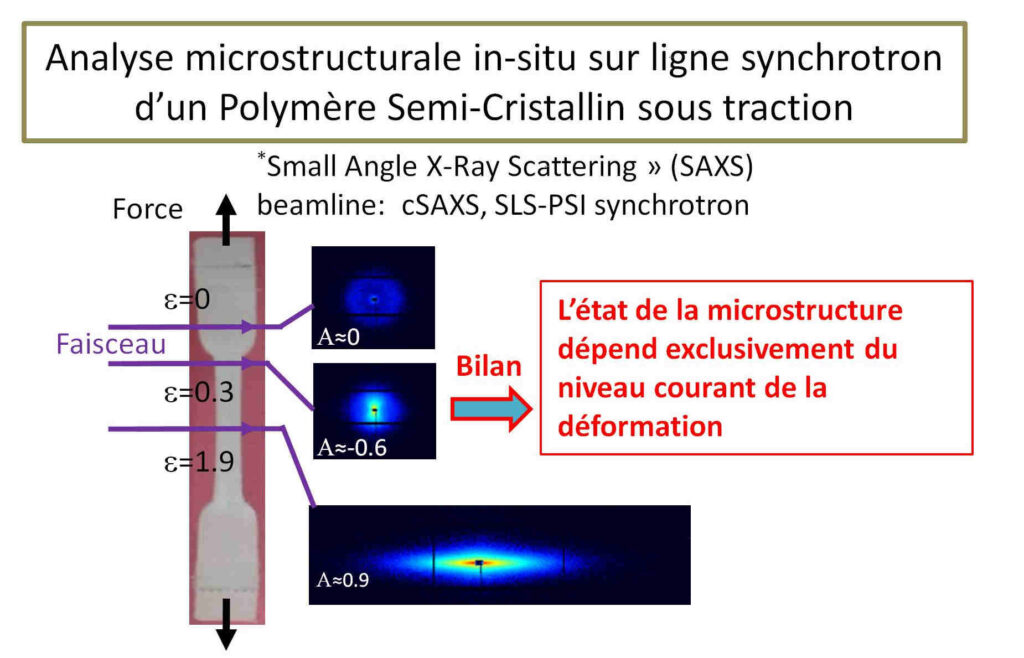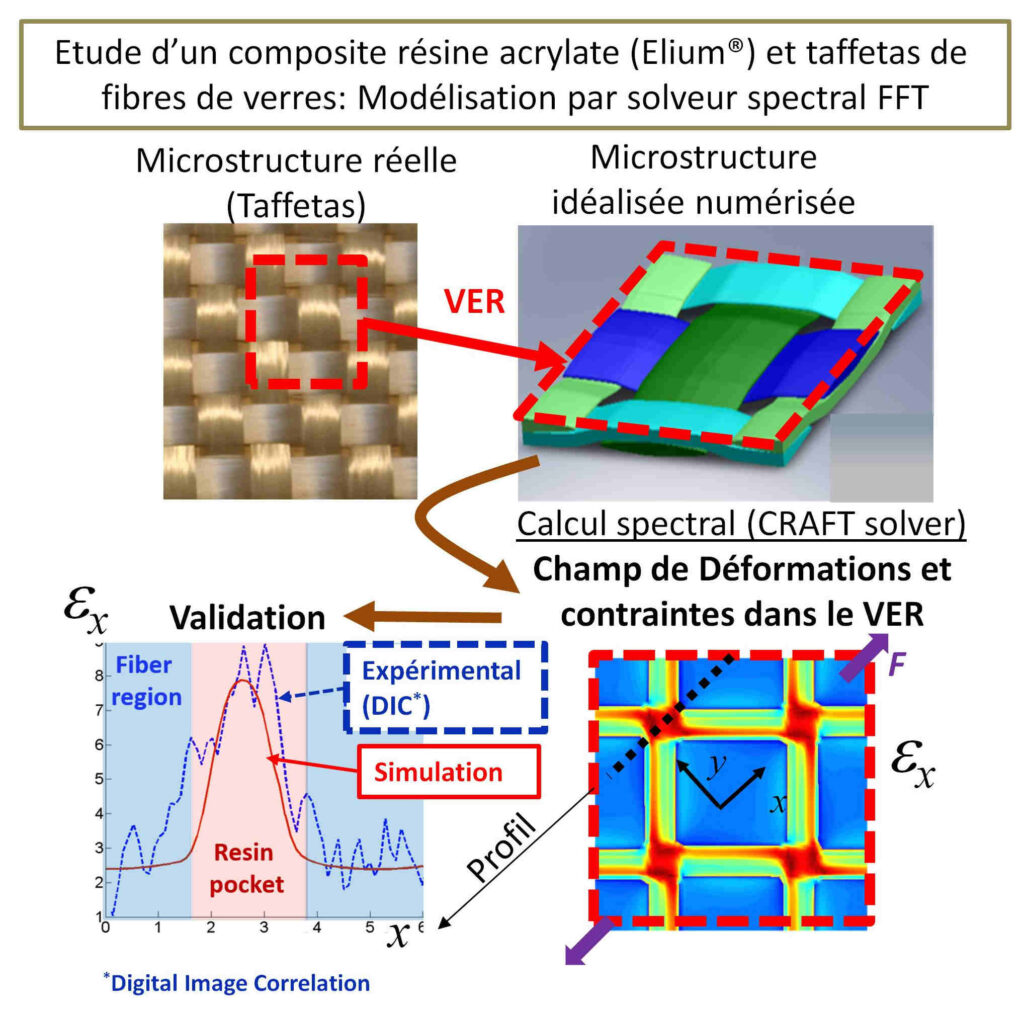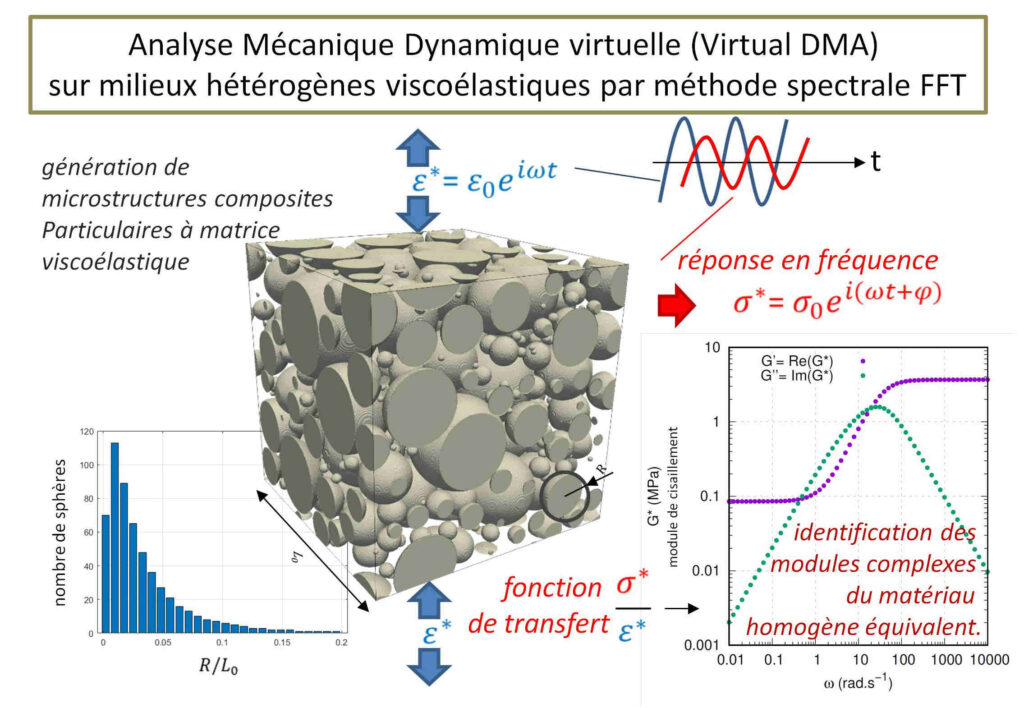Our main concern lies with the rheology of solid materials, which is approached according to a three-part work :
- Developping and perfecting thermomechanical behavior’s laws which are conditioned by material parameters identifiability (Model-Based Metrology)
- Developping and producing experimental characterizations at the micro-macro scales, in-situ and on intrinsic variables in order to produce measurements suitable for a metrology based on inverse methods for parameter estimation (Model-Based Metrology).
- Understanding deformation mechanisms at the microscale within the Representative Elementary Volume thanks to local and in-situ measurements and/or to the virtual modeling of heterogeneous systems based on spectral solvers.
Studied materials are polymer materials (amorphous or semi-crystalline) or composite materials based on a polymer matrix. New projects in our team focus on 3 lines :
- Fundamental research around new coupled approaches for the modeling of the mechanical behavior of heterogeneous solids, based on a description, possibly of heuristic nature, of the microstructural reorganizations within the frame of phase-field methods.
- Refining behavior’s laws on the basis of complex loading paths like tensile and torsion tests.
- Solid rheological investigation of new materials, vitrimers based on thermoplastic precursors.




Human ressources
- 3 half-time researchers
- 1 regular Phd students
Experimental facilities
The RheoSol platform is based on mechanical testing machines
- Hydraulic press MTS 100kN with the Flextest SE electronic
- Tensile / Torsion MTS Bionix 25kN with the Flextest 60 electronic
- Tensile/Fatigue Bose Machine 3.3kN : 0.001-10 Hz, temperature up to 500°C, 3-points bending tests)
- Tensile mini-machine Kammrath&Weiss 5kN devoted to Tension-Compression tests performed on optical benchs or under synchrotron-light sources : preferred international instruments are: Soleil (Swing), Swiss Light Source (Tomcat, cSAXS)
- Dynamic Mechanical Analyser (DMA) Acoem-Metravib, +/- 150N, 0.00001Hz-1000Hz frequences, -150°C-500°C Temperature range, 7 stiffness measurement decades in 3-points bending, tension-compression and thin film shearing modes
And metrological devices
- Kinematic fields
RealTime VideoExtensometry (System developed at the lab)
ARAMIS (stereo-correlation from 3D images)
- Thermal fields
IR Camera FLIR
- Microstructural investigation under light scatterin
Incoherent Polarized Steady-Light Transport (Light scattering probing, system developed in the lab)
Multispectral laser0.4-0.8mm
Optical bench with CCD camera and automated Generator/Analyser of polarisation
Numerical simulations of solid material rheological behaviors focus on the REV macroscopic scale based on the use of numerical codes
Finite elements (ABAQUS, FlexPDE
Spectral solvers for mechanics : Developments based on the CRAFT software having led to a virtual DMA simulator and on the AMITEX software (CEA, Maison de la simulation) and phase field methods (codes developed at the lab)
Scientific fields
- Elasticity, Viscoelasticity, Plasticity, Damage
- Thermodynamic of Irreversible Processes
- Fractal approach of dissipation and viscoelasticity coupled with virtual(numerical) DMA experiments over synthetic 3D heterogeneous REV.
- Inverse methods (Parametric estimation based on behavior’s law, reconstruction of thermomechanical sources)
Metrology
- Field measurements, inversion of measurements (Stereo-Correlation and IR Imaging) and parameter estimation techniques
- Mechanical testing (tension-torsion-compression-flexion and Fatigue)
- Dynamic viscoelasticity (DMA) from 10-3 to 103 Hz
- In situ technique for damage characterization using incoherent polarized light scattering (semi-transparent materials) and multispectral
- Submicronic characterization on big instruments: Soleil (Swing), Swiss Light Source (Tomcat) based on X-ray interactions (SAXS, WAXS)
Collaborations
- Laboratoire Environnement et Minéralurgie, LEM UMR 7569, Nancy
- Laboratoire de Mécanique et Acoustique, LMA UMR 7031, Marseille
- CEA – Maison de la simulation, USR 3441, Saclay
- Laboratoire de Physique des Solides, LPS UMR 8502, Orsay
- Laboratoire de Réactions et Génie des Procédés, LRGP UPR 3349, Nancy
Molecular, Macromolecular Chemistry, and Materials Laboratory (C3M UMR7167), ESPCI, Paris.
| ANDRE | Stéphane | Professor |
| BOISSE | Julien | Associate Professor |
| CUNAT | Christian | Professsor Emeritus |
| FARGE | Laurent | Associate Professor |
| CORNU | Marc | PhD student |
| DAUJAT | Valentin | Engineer |
